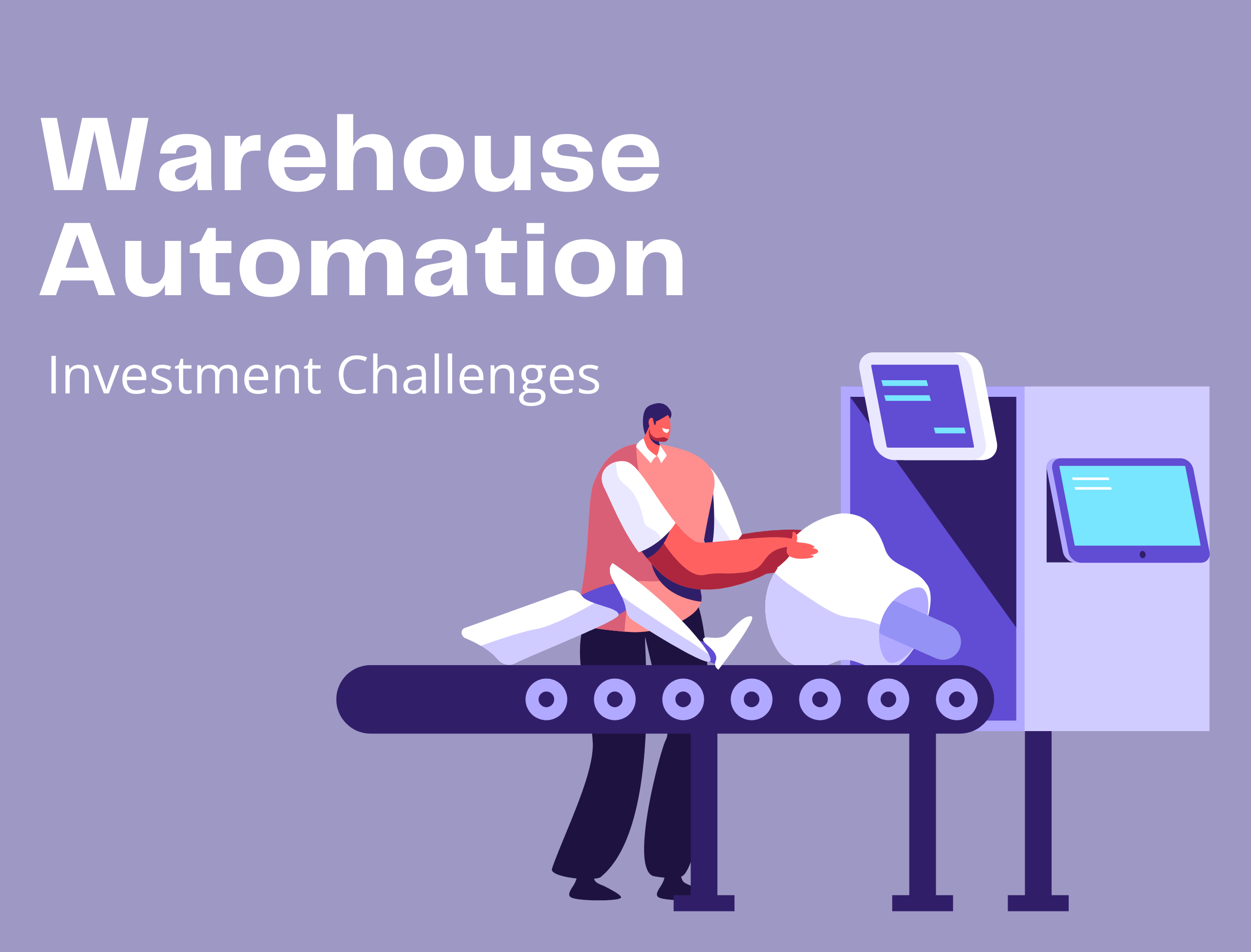January 17th | 3 min read
Laurent Bourque
The Challenges of Investing in Warehouse Automation
‘Don’t get too excited, Laurent, we do not have that kind of money…’ my boss said right after we visited one of our customers whose intralogistics operations were fully automated. This immediately set expectations – and tempered mine – for our own automation journey.
Automation Benchmarking
Most stories about automation feature companies with unlimited capital implementing large-scale solutions with the help of a single, vertically integrated, automation provider. You’ll hear about their ‘greenfield’ buildings, meticulously designed for automation, and their great ROI. It’s hard not to get excited. On the other hand, you may look at warehouse automation because you can’t bear to find or to pay workers and you’re tempted at the idea of robots replacing them. If that is the case, you’re standing where we were two years ago. This is only the beginning of your automation journey.
Process & Facility Design
A simple ROI calculation—$70,000 per worker per year vs. $150,000 per robot plus 30% implementation cost—might make automation seem like a no-brainer. But automation isn’t a one-size-fits-all solution. There isn’t a quantitative equation to relate your workers to the robots you want to purchase.
The first step in your automation journey is to detail your current processes and facility layout. This enabled you to match the tasks in your environment with proven technologies that can perform the same or better. Without a match, you need to re-engineer your processes and facility for automation.
A design phase should highlight areas of your operations with high automation potential: usually highly repetitive, simple and resource intensive tasks. Automation can be possible, but it is not an end of its own. Just like any technology, automation must deliver value. Meanwhile, don’t ignore the areas that can’t be automated. Improving those processes might mean more for your bottom-line than automating others.
To improve or to automate
A good investment strategy will always be to prioritize low-risk, high-reward improvements in the short term before progressing to riskier or costlier investments as needed. Most operational environments require systematic and incremental improvements before automation can be conceptualized. Yes, this approach might feel slow, but there are incremental benefits to be reaped too. Automation is both risky and expensive, precaution is essential. Otherwise you could be left with an expensive automation solution that doesn’t solve anything and generates new costs.
In our case, the design phase revealed that replenishing raw material pallets to manufacturing lines would need a Just-in-Time (JIT) approach if we wanted to replace forklift drivers. We could not efficiently move pallets from warehouse to staging in an automated ‘pick’ process. What if the manufacturing schedule changed? You need to return EVERYTHING to the warehouse. A time study during the design phase revealed an inefficiency: the time spent moving materials from the warehouse to staging racking, from staging racking to lineside, and directly from the warehouse to lineside was essentially the same. This raised an obvious question—why not eliminate the unnecessary “double touch” and move directly from the warehouse to lineside? The picking task was clearly wasteful.
We didn’t want to invest in robots that would only be productive half the time, especially since we could barely afford a couple. On reflection, we realized we didn’t want our current workers to operate at half productivity either. This realization marked a turning point—perhaps we were onto something much bigger.
Integration & Orchestration
Operations are the way they are because that’s the way they were and that’s the way they’ll be. Until someone breaks the cycle.
When I asked, ‘Why are we picking raw material in advance?’ my boss at the time responded ‘The lines can’t stop’
Fair enough—we’re a manufacturing plant. But what if operators requested raw materials only when needed, and forklift drivers will only deliver then? We might as well integrate all material movement flows into a JIT system, including Finished Goods putaways from line side to warehouse for instance.
This allows for return trips to the warehouse, where forks are always full!
The result? More combined loads, fewer trips, and improved productivity. So do we really need robots?’
We did not need robots in this situation; however, we did need software to handle communication, combination, and prioritization. Tasks needed to be assigned using JIT approach to the most suitable resource, whether a worker or a robot. This required interfaces to create, confirm and monitor tasks, as well as live queries to our ERP/WMS data.
We needed a Multi-Agent Orchestration platform (MAO).
The Role of MAO
Implementing MAO became the second step in our automation journey—a minimal investment that turned our design-phase vision into reality. I’d wager the ROI from this small investment obliterates the one from any shiny robot you might currently dream about. But it’s not one or the other, it’s one before the other.
With MAO in place, you will be able to implement those shiny robots without the requirement for a custom software.
Automation isn’t about jumping straight to flashy robots. It’s about building a foundation so that future automation steps become less risky, and each new robot could be plug-and-play. MAO didn’t eliminate the need for robots; it enabled us to implement them effectively when the time was right.
Looking to learn more about Multi-Agent Orchestration and how to make the most out of your investment in automation? Our team will be attending Promat 2025 in Chicago.
Click here to learn more and book an appointment to meet with us there.
Join Onomatic at Promat 2025 | Onomatic

